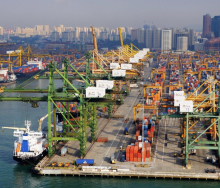The introduction of a global carbon price on shipping emissions looks imminent, and according to Swedish energy technology company Climeon, there’s likely to be an economic pricing mechanism in place by this time next year.
While the exact nature of this is yet to be confirmed, many industry professionals expect it to take the form of a global carbon price on shipping emissions.
“Essentially, shipping companies will be forced to pay a set fee per tonne of carbon that is emitted as a result of burning fuel – commonly known as a ‘carbon tax’.”
There is growing industry support for the global tax, and according to Climeon, reports suggest 47 countries support the introduction of a levy on GHG emissions – although Brazil and China oppose it, arguing the potential negative impact on emerging economies that are reliant on trade renders a carbon tax unfair.
Countries have until September to decide whether to proceed with an emissions price and/or a new fuel standard - and global initiatives appear to be the only way to achieve the IMO’s ambition targets and avoid fragmentation of the market with differing national policies, says Climeon.
The impact on carriers will be significant – depending on the fee.
One proposal is a carbon fee of $150 per tonne of CO2, although the company believes this lies at the more ambitious end of the proposed fee structure.
The downstream impact has, however, raised concerns.
If carriers hike costs for their customers to cover the financial impact, everyone will feel the pinch.
“More than 90% of traded goods are transported via our oceans (OECD, 2024), which means everyone could feel the impact if shipping companies hike up their fees to account for the increased expenditure associated with the carbon tax.
“Impact assessments on proposed measures, including a carbon tax, are due to be completed by Autumn 2024. The economic mechanism could be introduced as early as 2025. A global carbon tax could help the industry to achieve key net-zero goals, including a 40% reduction in CO2 emissions per transport work by 2030, and net-zero GHG emissions from international shipping by 2050.”
The 2023 IMO GHG Strategy envisages a reduction in carbon intensity of international shipping as an average across international shipping, by at least 40% by 2030. The new level of ambition relates to the uptake of zero or near-zero GHG emission technologies, fuels and/or energy sources, which are to represent at least 5%, striving for 10%, of the energy used by international shipping by 2030.













